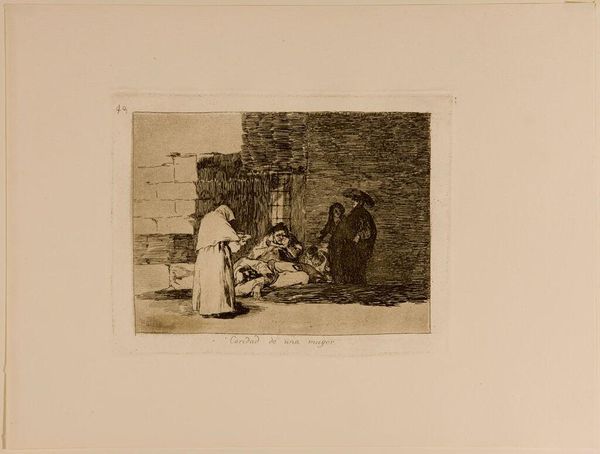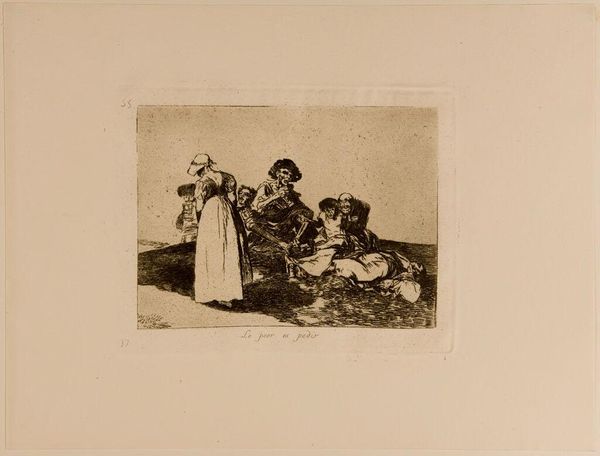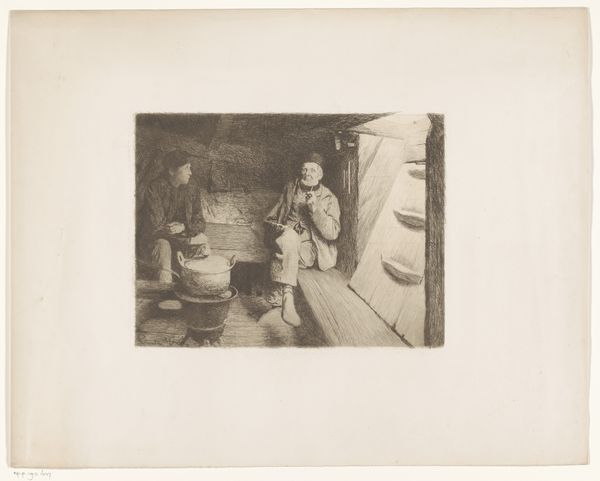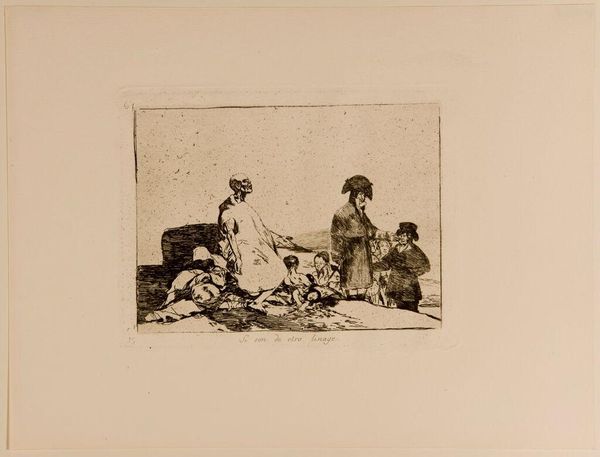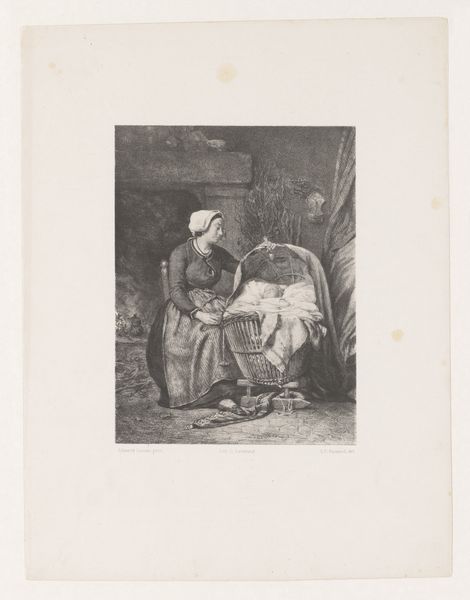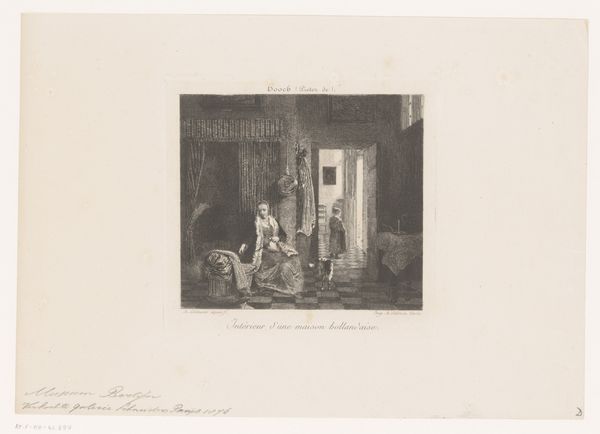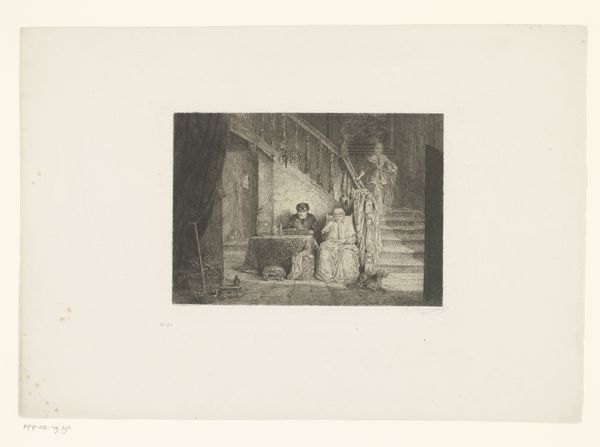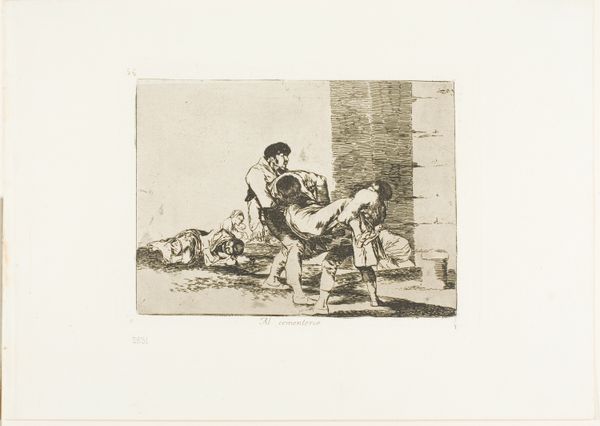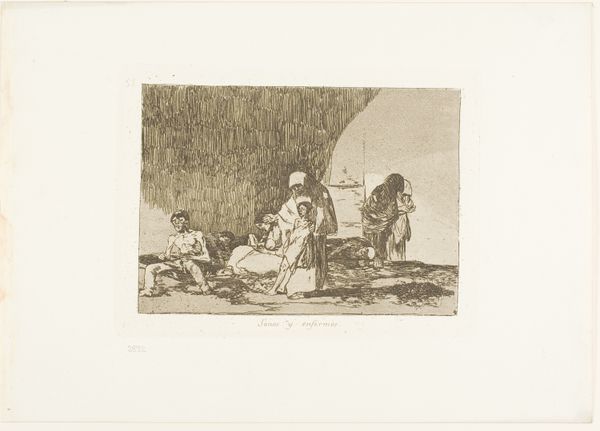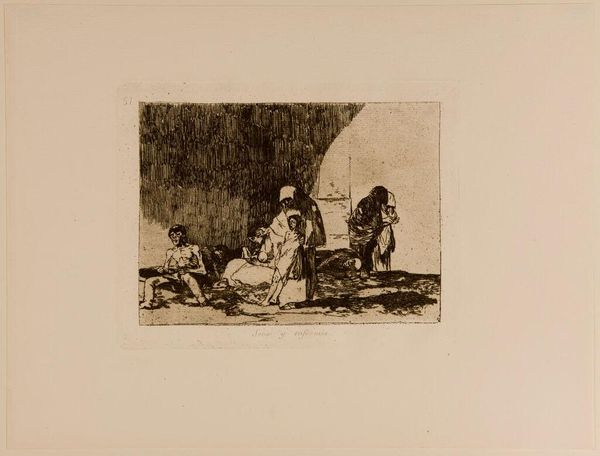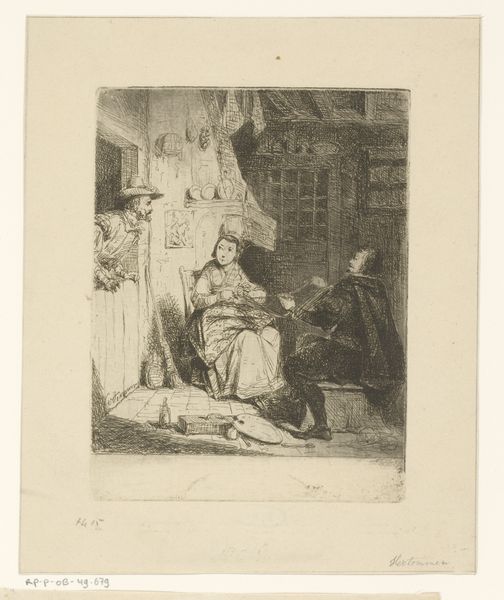
A Woman's Charity, plate 49 from The Disasters of War Possibly 1812 - 1863
0:00
0:00
drawing, print, etching, paper
#
drawing
#
narrative-art
# print
#
etching
#
war
#
figuration
#
paper
#
romanticism
#
history-painting
#
realism
Dimensions: 130 × 180 mm (image); 153 × 205 mm (plate); 240 × 340 mm (sheet)
Copyright: Public Domain
This is plate 49 from Francisco Goya’s series 'The Disasters of War,' made using etching and aquatint. Goya employed these printmaking processes to capture the stark realities of conflict. Etching involves drawing with a needle on a metal plate covered with wax, which is then submerged in acid, biting away at the exposed lines. Aquatint, on the other hand, creates tonal areas through controlled acid baths on a resin-coated plate. The controlled application of acid allows for a range of textures to be produced. Here, aquatint creates deep shadows and a sense of decay, emphasizing the vulnerability of the figures, and the brutal impact of war on ordinary people. The velvety blacks underscore the emotional weight of the scene, creating a sense of immediacy. In Goya's hands, printmaking became a powerful means of social commentary, bypassing the traditional patronage system of painting. The relatively inexpensive and reproducible medium of print allowed Goya to circulate the images widely. By focusing on material, making and context, we can understand the full meaning of his work.
Comments
No comments
Be the first to comment and join the conversation on the ultimate creative platform.
